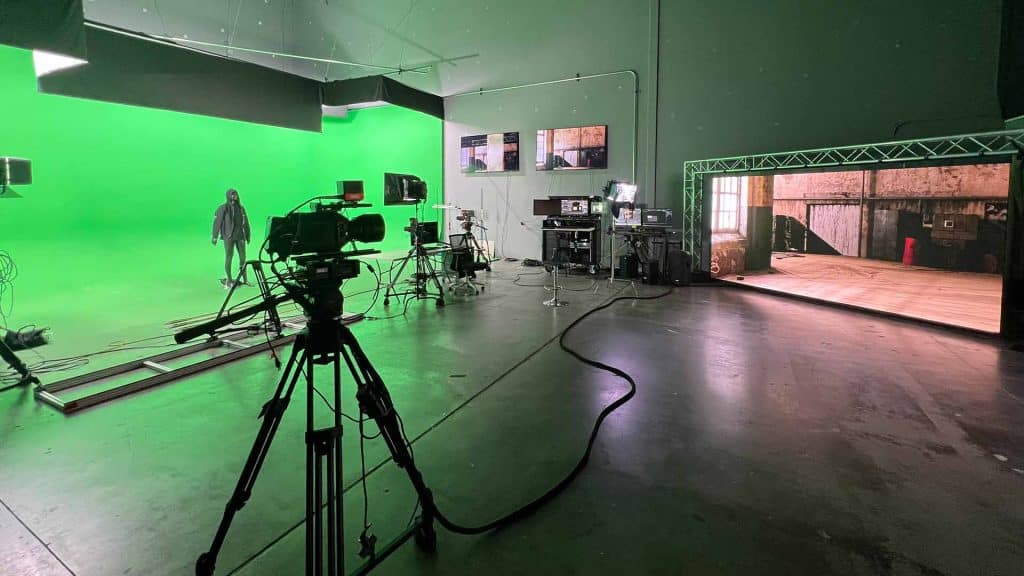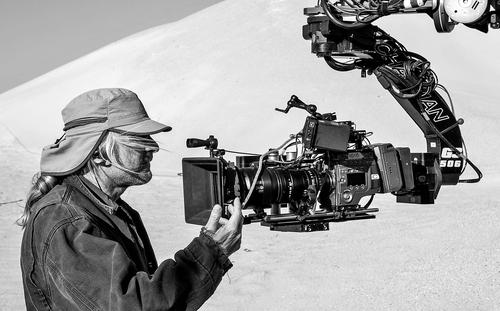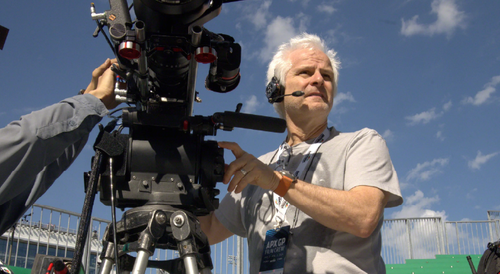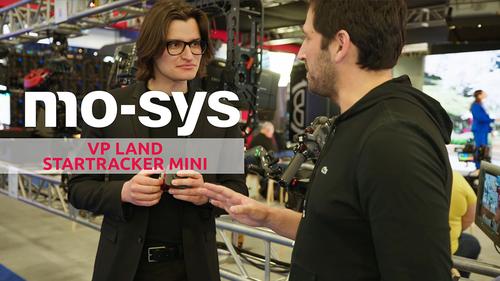A New Hybrid Virtual Production Workflow
A New Hybrid Virtual Production Workflow for efficiency, reduced cost, and maximum creative freedom
Mo-Sys founder Michael Geissler on the cost-effective efficiencies in Hybrid Virtual Production for small to medium budget projects, and corporate content producers under increasing pressure to create more-for-less with a recession looming.

Here’s the thing - many people mistakenly use virtual production as a synonym for LED wall filming. In reality, virtual production can cover everything from LED walls to green screen, blue screen and much more.
So, when talking about virtual production, there is a misconception that its rise in popularity will mean that LED walls are going to take over from green screen production. They believe that huge LED volumes will be required to film what they need, when in fact, if you mix smaller LED walls with green screen, then you don’t need a huge volume to shoot big projects at all. With Mo-Sys’ Hybrid Virtual Production workflow, it can all be achieved within a relatively small space, without splashing out on big expensive volumes.
 Mo-Sys Hybrid Virtual Production Workflow
Mo-Sys Hybrid Virtual Production Workflow
Virtual production for small and mid-range budgets has been somewhat neglected in all the LED Virtual Production hype, yet these are the types of projects that would benefit the most from what it has to offer by increasing production value within the same budget. Virtual Production thrives on constraints. The moment you're limited by budget or location, VP kicks in - and that's where it gets highly efficient. It is a powerful tool which can enable production in seemingly far away and exotic locations, which the budget wouldn’t have stretched to.
For example, when filming with LED volumes, you need to bring set builders in to create a seamless join between the real-world studio and virtual scene displayed on the LED wall, and you can’t have natural shadows. That means your digital advantage of switching from one scene to the next for super fast production is gone. You have to build the floor for every different scene, which complicates things and is the opposite of what people expect with LED wall filming, which has a reputation for being more efficient.
This is why a lot of LED wall demos are actually done with sand as you can pour it out and move it quickly for easy set building. But we can’t just keep filming on beaches and deserts or far away planets… When people look back on work filmed in virtual production, I’ll bet they’ll know it was shot between 2021-2022 just by noting the sand used for the floor!
With green screen, on the other hand, you can film the floor as it’ll be replaced later with the scene you want, along with the shadows cast, making it look more realistic.
Looking at the advantages and disadvantages of both styles of filming, it would make sense to use each for its benefits. That’s why we developed a Hybrid Virtual Production workflow which combines the two - filming on green screen for wide shots where you’ll need to film the floor, and then switching to LED volumes in the same studio for mid and close-up shots.
"Be one of the first to master this technology and help lead the way for a future of magical filmmaking"
Michael Geissler, Mo-Sys
LED walls work really well for this, particularly if your actor is wearing glasses or something reflective, which in green screen causes a green colour spill, (this can be removed by the more experienced Director of Photography). Green spill is much more forgiving in wide shots where you’re further away from the actors. In LED, it just reflects the scene spill around them which is more realistic.
So your actors are shooting on green screen, and once they move over to the LED wall in the same studio, someone can prepare the green screen and its foreground props for the next scene. It all just creates further efficiency on set and throughout production.
All these misconceptions and misunderstandings mean that there is some further education needed within this space. And that’s not surprising seeing as this is a fairly new way of filming. Not only that, it’s a completely new workflow, which through preparation and pre-production, drastically reduces post production and filming time.
To recalibrate how people work, there is some training required around the foundation of virtual production - from LED walls to green screen, lens distortion and colouration to synchronisation. That’s why we built the Mo-Sys Academy which exists to transfer knowledge and build confidence in small groups. After two weeks of practical hands-on learning, you can reach technician level.
There is currently a knowledge gap in the industry between the experts in virtual production and the majority of filmmakers and producers who will be using it to create bigger and better work. But there is a hunger for it, and people are starting to get curious.
Be one of the first to master this technology and help lead the way for a future of magical filmmaking. Create more, do it fast and for less with Mo-Sys’ Hybrid Virtual Production workflow. Learn more, contact Mo-Sys.




